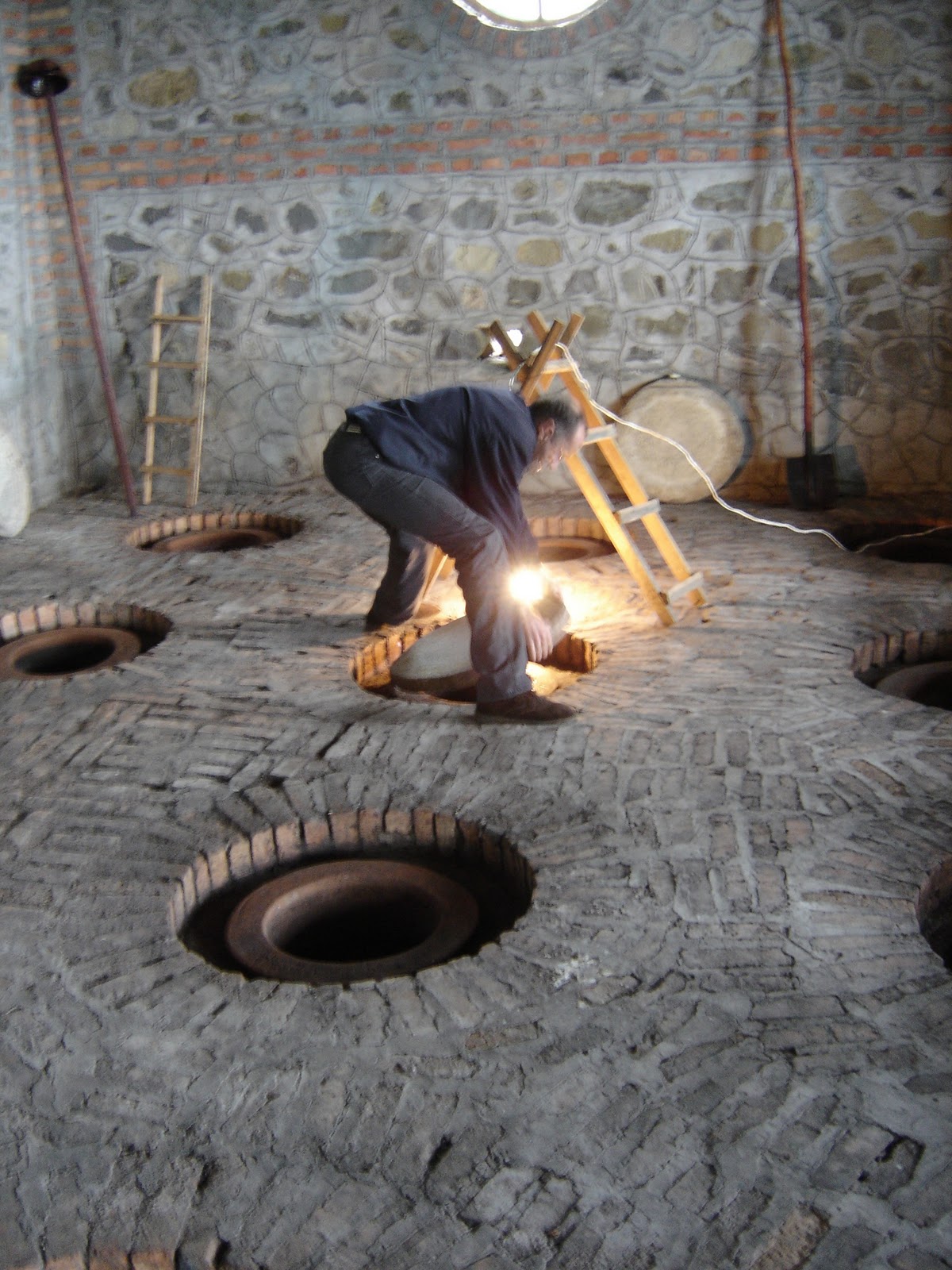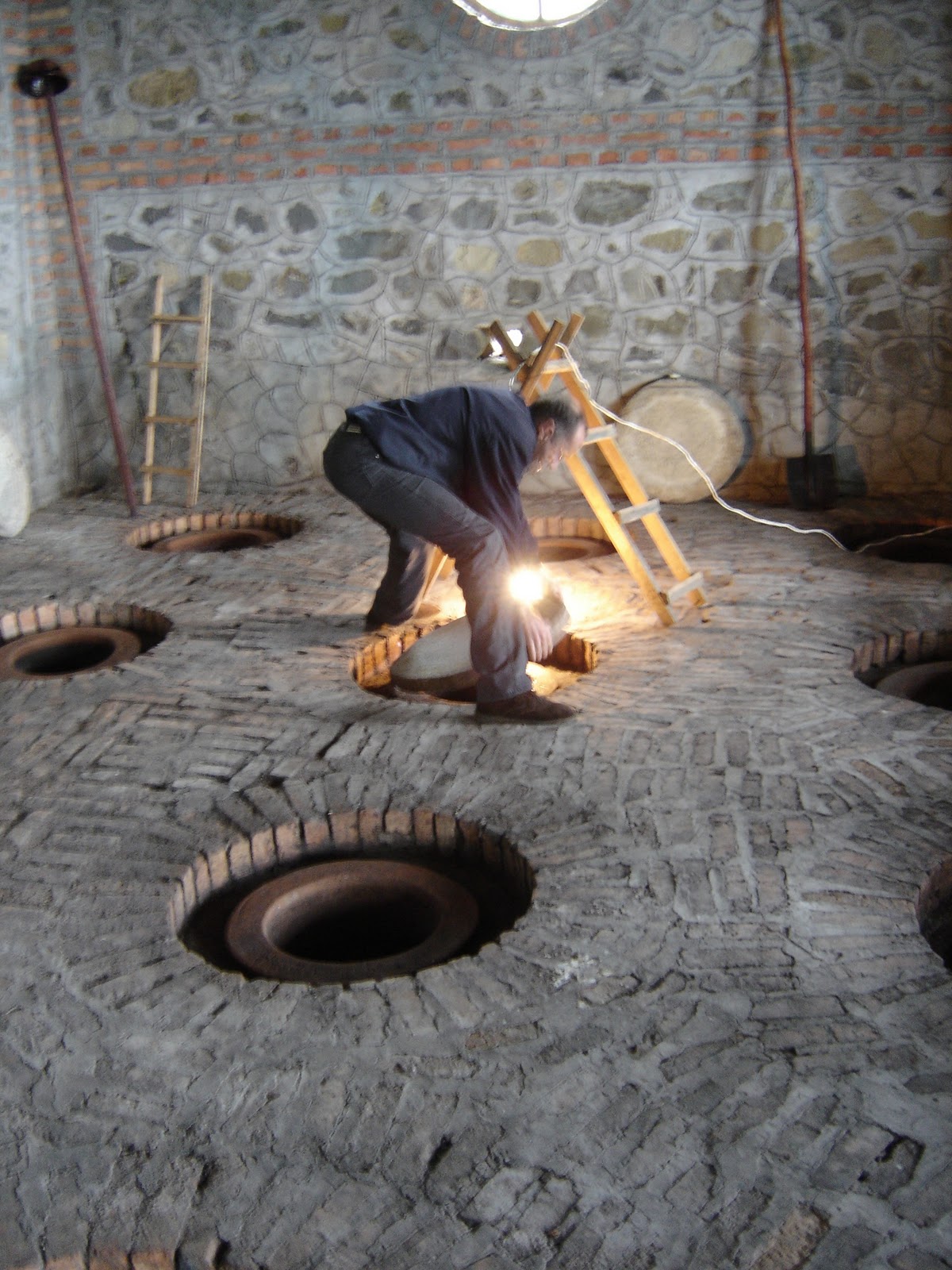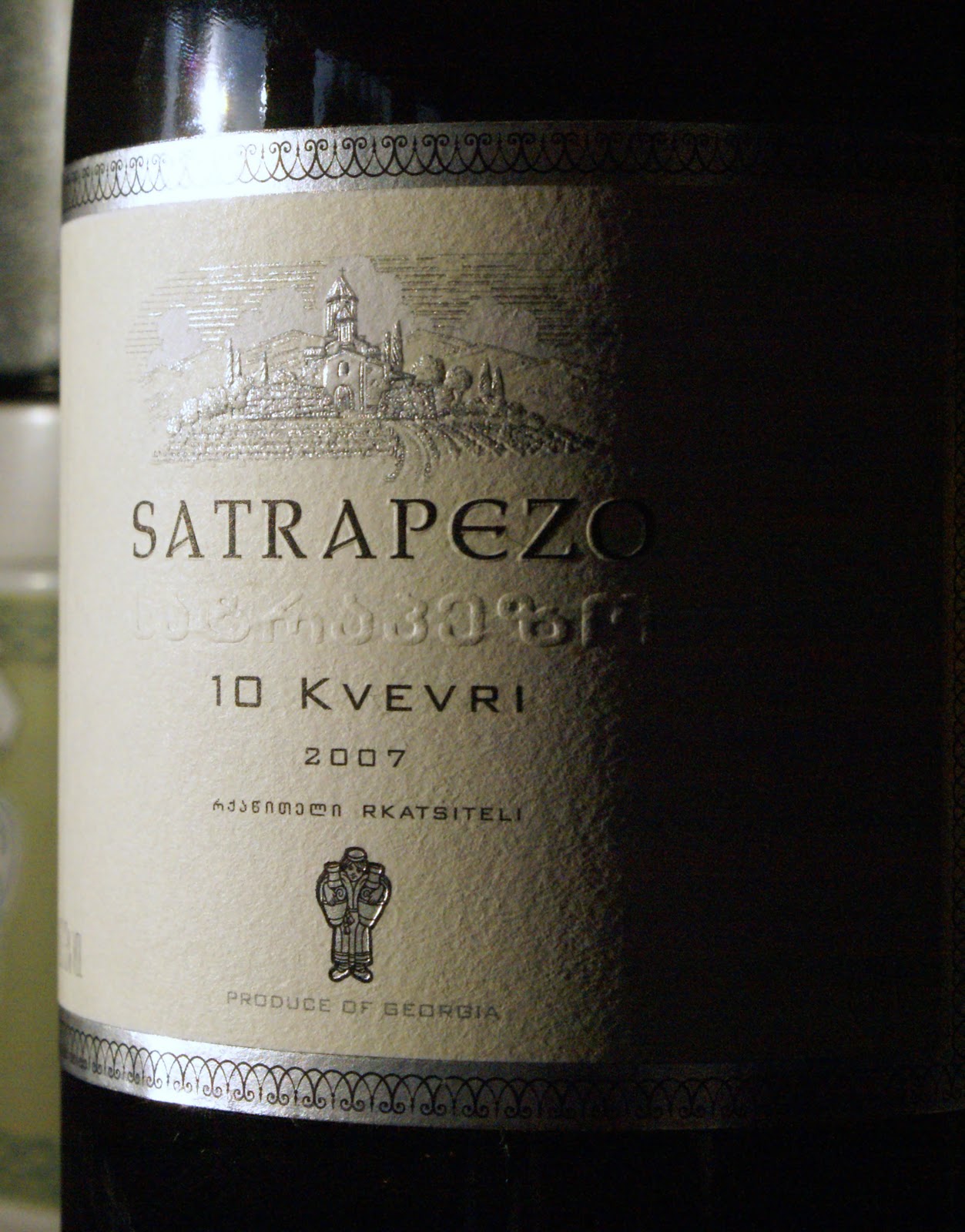Telavi Wine Cellar 10 Kvevri 2007
Posted on 23 October 2010
Today’s wine, one of the most engaging I’ve had of late, comes from Georgia. A country with a longer tradition of vine growing than anybody else, that is now trying to establish itself on the global wine market.
Apart from its unparalleled library of indigenous local grape varieties, one of Georgia’s major assets lies in its traditional production methods. White wines – which are more important here than reds, historically – are routinely fermented on skins, and often in large clay amphorae, called kvevri, which are buried in the ground and provide the best temperature control ever achieved in winemaking. The wine is racked off the skins after several months, taking on a deep amber colour and a very idiosyncratic bouquet of fallen apples, spices and warm yeastiness. As antiquated as this sounds, the amphora vinification is currently being pursued by several natural wine producers in Western and Central Europe, including Sepp Muster in Austria and the famous Joško Gravner in Italy.
 |
| Quality inspection in an amphorae room, Kakheti, Georgia. |
The large Telavi Wine Cellar is one of Georgia’s leading wineries and as everybody here, is experimenting with amphora fermentation and ageing. When I visited in 2005, the amphorae were just being installed in a special fermentation room. The red Satrapezo Saperavi was first made in 2004 and integrated amphorae from the subsequent vintage. 2007 was the first vintage of the white wine I’m tasting here, the Satrapezo 10 Kvevri, made of 100% Rkatsiteli, Georgia’s flagship white variety.
This wine is presenting all the characteristics of an amphora white in high intensity: the colour is a deep orange-amber, there is little direct fresh fruitiness on the nose but a lot of complexity and intensity: apple skins, dried apricots, quince and peach preserve, cinnamon, cloves, pepper, vanilla, and a lot of raisins. What is really interesting here is how this distinguishes itself from other amphora whites: instead of rustic phenolic oxidativeness it is showing very balanced and actually elegant, with a silky, even texture and satisfactory freshness (not easy to achieve in the style), clean, juicy and mildly mineral where many similar wines are rough, fruitless and alcoholic. This wine is not a curiosity but a fully valid bottle – surely made in an ‘alternative’ style but without sacrificing drinkability and a sense of linearity. I’m a big fan of Georgian wines, and I love to try an amphora white when I have the occasion. This might be one of the best wines I’ve had in both departments.
 |
| Grape harvest underway in Kakheti, Georgia (September 2005). |
This post also appears in Hungarian on A Művelt Alkoholista.
Source of wine: sample provided by the Polish importer for a WINO Magazine tasting.




